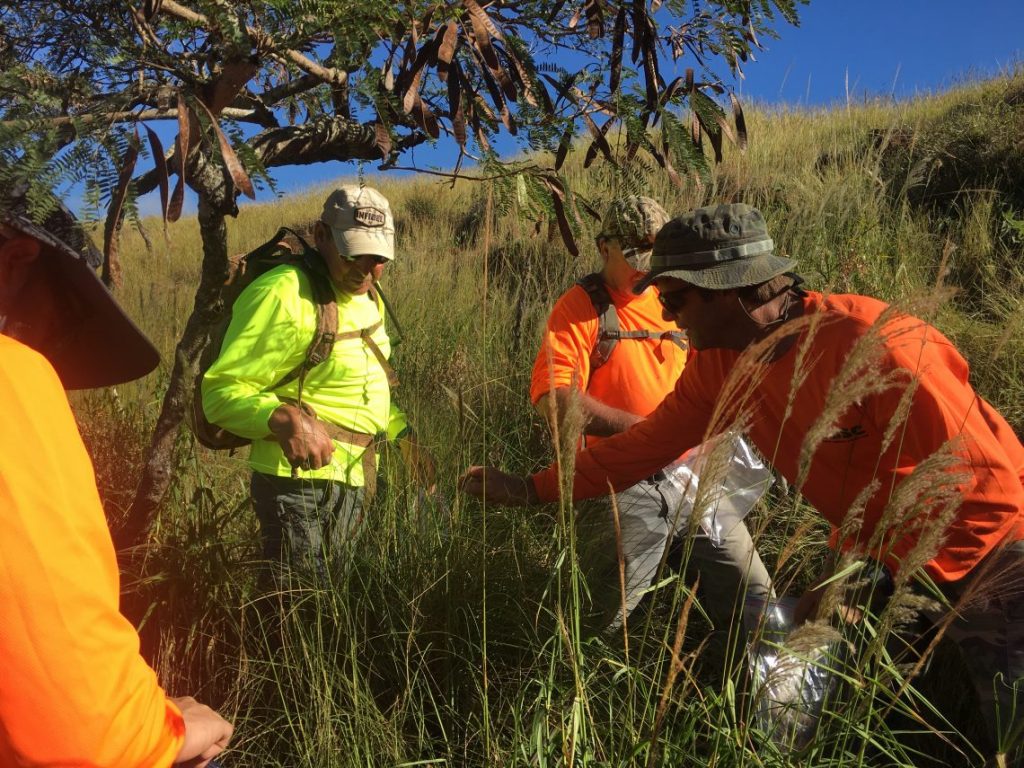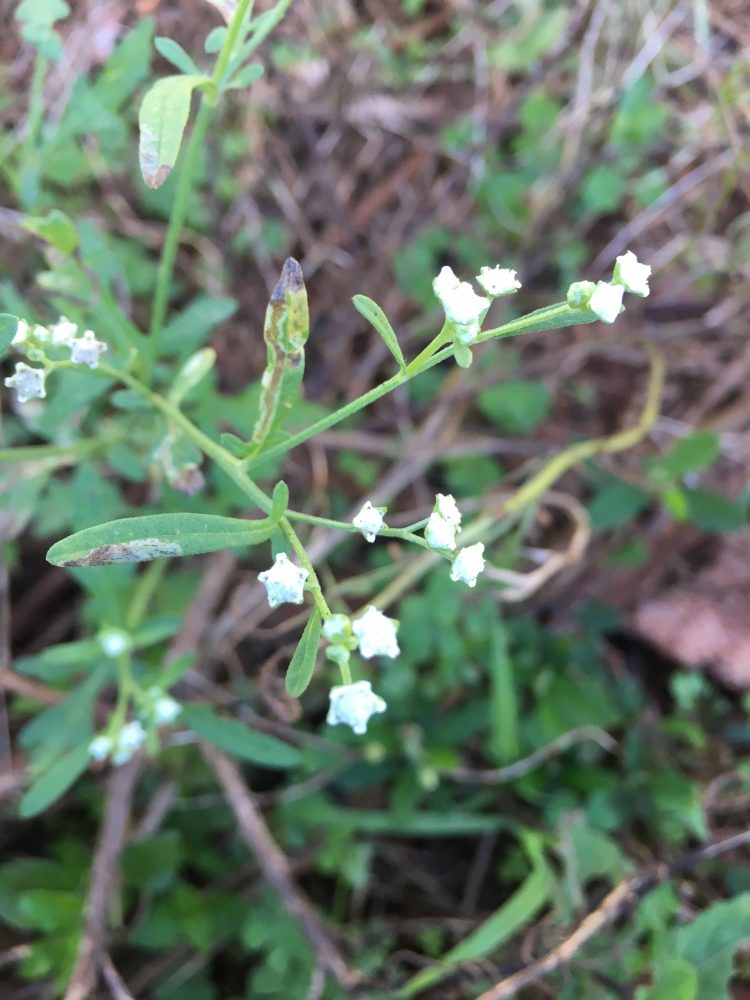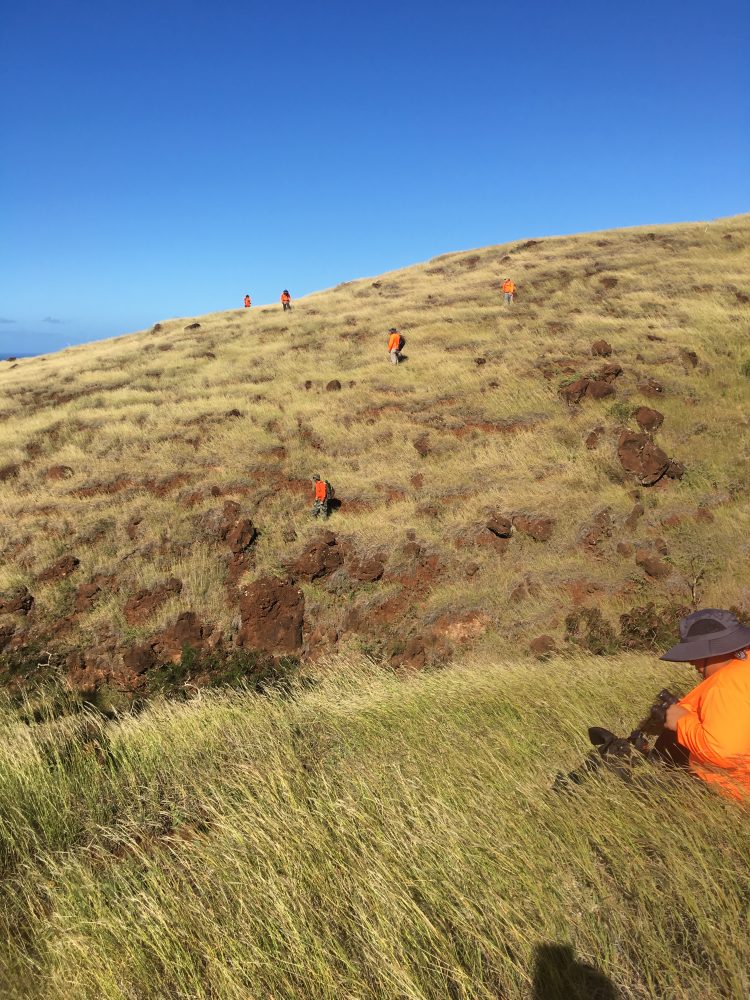
If you travel between the Hawaiian Islands you know that each Island is unique, in traditions and food, expressions and customs. Plants and animals vary also – both the native plants and animals as well as the invasive species that plague each island. Mongoose are not established on Lānaʻi or Kauaʻi. Miconia has never been found on Molokai. These differences reflect where pest species were introduced as well as the efforts to stop them.
On the island of Lānaʻi, Kari Bogner, Botany Program Manager with the Pūlama Lānaʻi Conservation Department, is tackling the eradication efforts of a half-dozen invasive plants that have been declared as lost causes on other Hawaiian Islands. Among them are parthenium, a weedy herb in the aster family; fountain grass, a fire-adapted grass from South America; and ivy-gourd, an invasive vine in the cucumber family. “I’m optimistic,” she says, “we’re making a lot of headway with these species.”
Eradicating a plant taxes the perseverance of even the most dedicated. Pulling, cutting, and digging is instantly gratifying, but returning week after week, month after month, searching for seedlings and waiting for the seed bank to be exhausted takes a toll on patience and budgets. The effort is essential – if a plant is missed and goes to seed, it starts the whole process starts again over. If those seeds are spread unnoticed, the setback is even greater.
In March of 2015, Maui-based botanist Hank Oppenheimer noticed a familiar weed outside of Lānaʻi City. It was the first time he had seen the pasture weed Parthenium hysterophorus (False ragweed) on Lānaʻi, but knew from his experience on Maui how invasive it was. Parthenium is native to the southern United States and Mexico. It is listed as one of the 100 worst invasive weeds in the world by the International Union for Conservation of Nature. Tiny seeds are carried unnoticed as people move cargo, animals, and soil long distances. Consequently, the pest has invaded 45 countries.
Parthenium takes over cropland and pasture, causing losses in the millions in Australia alone. The plant can inhibit the germination of other species – a survival strategy called allelopathy. This super-weed is not only poisonous to other plants–if it has invaded pasture, animals can be poisoned. Incidences of hay fever in humans also increase once parthenium invades.

On Maui, parthenium is too widespread to eradicate, but on Lānaʻi, the pest is only known from one location. A five-person Pūlama Lānaʻi crew removed the plant from six acres. The weed can produce seed within four weeks of germinating so Bogner and Jerome Sunio, biosecurity tech with Pūlama Lānaʻi, return to check the site every 10-12 days to stay ahead of the seed cycle. She hopes to exhaust the seed bank soon – not a small task given that a single plant can produce 15,000 seeds. She has not found a seeding plant since April of 2018.
Fountain grass is also conspicuously absent on the pineapple island and not by accident. The invasive bunchgrass is widespread on the Kona side of Hawaiʻi Island, covering acres of lava and fueling wildfires that destroy native dryland forests and threaten homes. But on Lānaʻi, there are only a handful of places fountain grass has been found; crews from the Maui Invasive Species Committee (MISC) spent years seeking out and removing the ecosystem modifying weed and now Bogner and Sunio scour the last known site every two months looking for seedlings. This weed is also a MISC target for eradication on Maui and is not known from Molokai.

Ivy gourd is yet another Lānaʻi success story. The drought-tolerant vine from Southeast Asia threatens dryland forests and coastlines. The vine is beyond containment efforts on Hawaiʻi Island and Oʻahu. MISC controls it on Maui; it is not known to be on Molokai. On Lānaʻi, MISC found the fast-growing climber in a greenhouse, and seeds were inadvertently spread in potting soil throughout the Mānele area. After battling the climbing vine in bougainvillea and other plants, Bogner’s efforts to eliminate it are proving fruitful – or rather an absence of fruit – she hasn’t found a seeding plant since last year.
You can help. If you are on Lānaʻi, contact Bogner and Pūlama Lānaʻi at 565-3683 if you see parthenium, fountain grass, ivy gourd or anything new and unusual. If you travel back and forth, make sure your gear is clean and free of weed seeds and dirt that could spread pests interisland.
Lissa Strohecker is the public relations and education specialist for the Maui Invasive Species Committee. She holds a biological sciences degree from Montana State University. Kia’i Moku, “Guarding the Island,” is prepared by the Maui Invasive Species Committee to provide information on protecting the island from invasive plants and animals that can threaten the island’s environment, economy, and quality of life.
This article was originally published in the Maui News on October 12th, 2019 as part of the Kia‘i Moku Column from the Maui Invasive Species Committee.
Read more Kiaʻi Moku articles.


